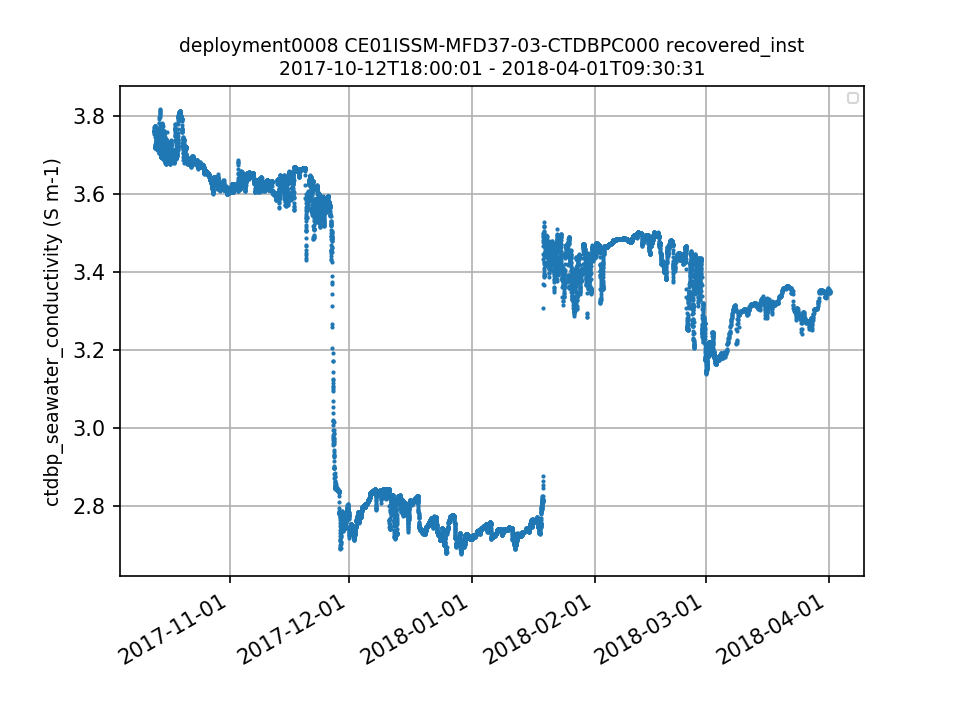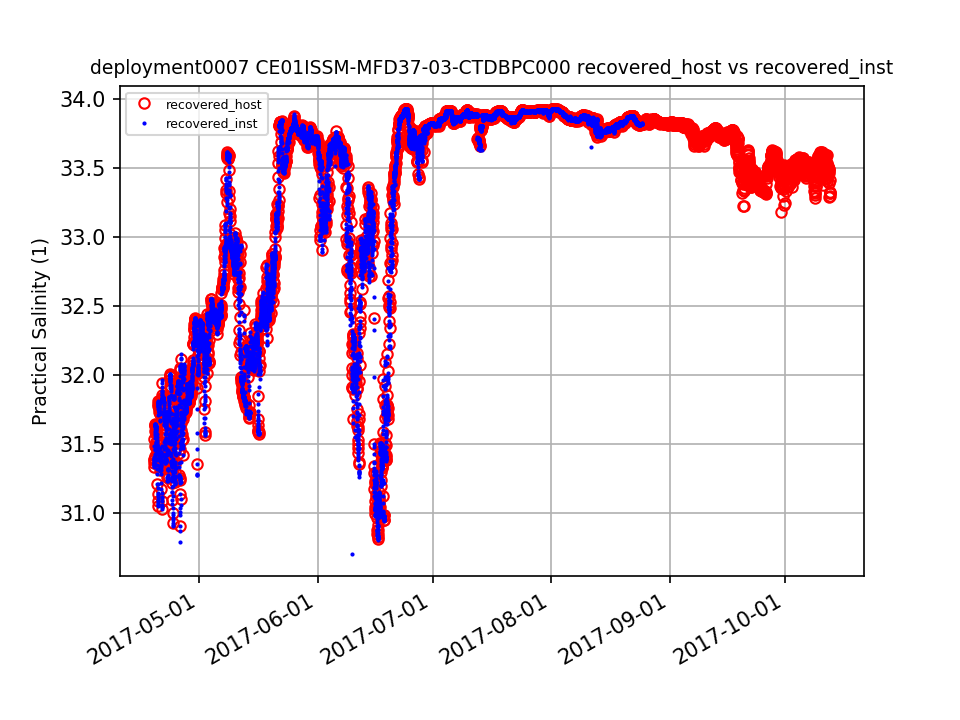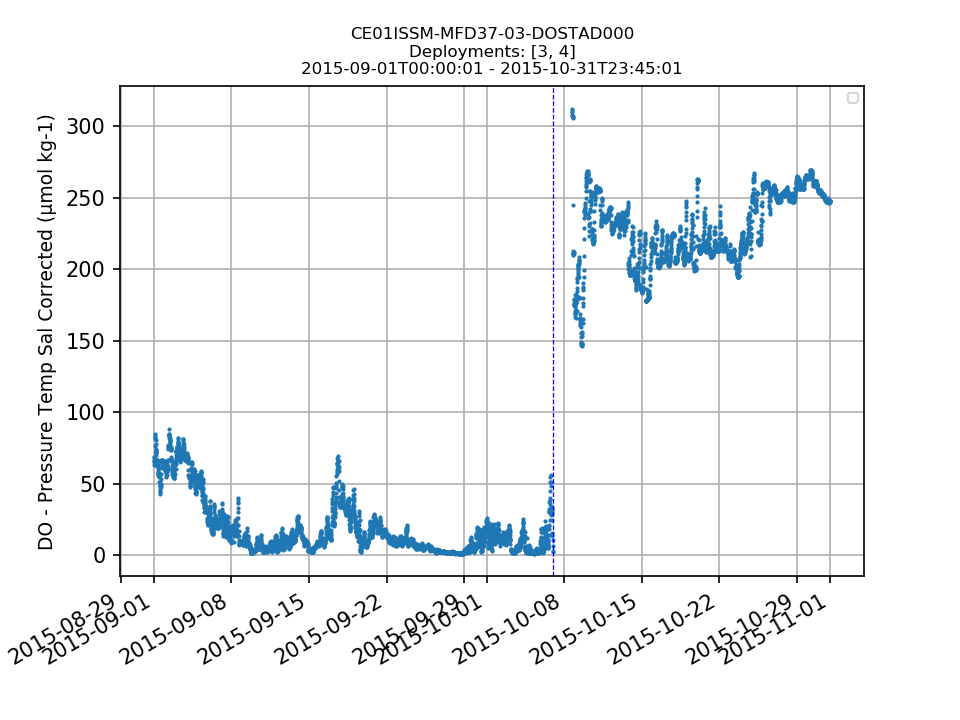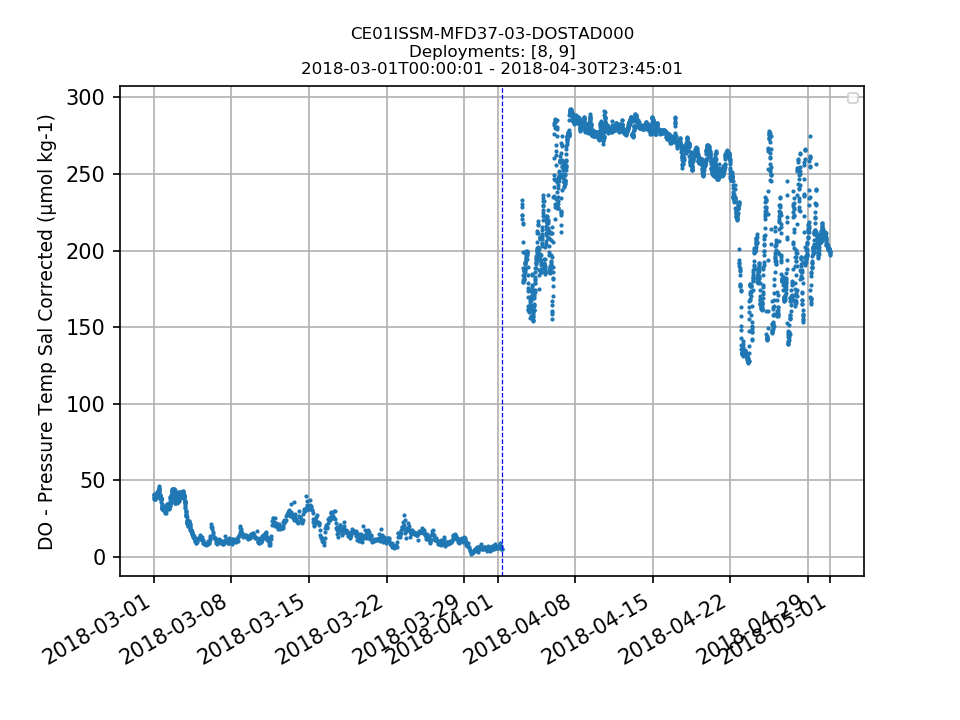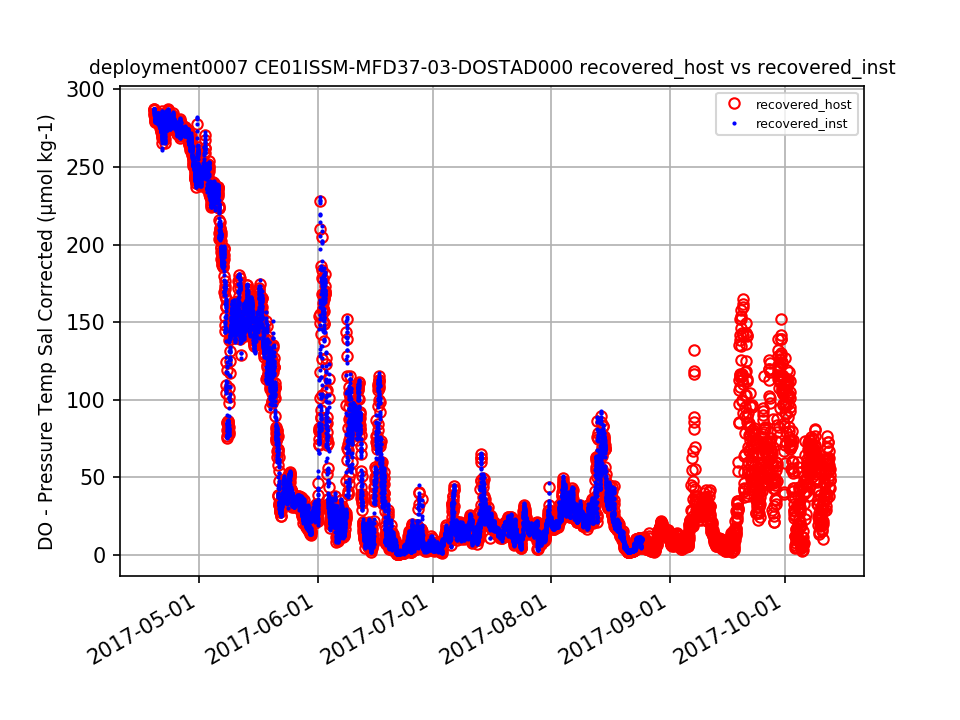Notes
Sort by:| Metadata | Start Date | End Date | Comment |
|---|---|---|---|
|
CE01ISSM-MFD35-06-PHSEND000 Deployment: 2 |
12/1/14, 12:00 AM | 3/1/15, 12:00 AM |
suspect data By Leila Belabbassi, on 5/14/19 |
|
CE01ISSM-MFD35-06-PHSEND000 Deployment: 1 |
4/17/14, 12:00 AM | 8/16/14, 12:00 AM |
suspect data By Leila Belabbassi, on 5/14/19 |
|
CE01ISSM-MFD35-06-PHSEND000 Deployment: 1 |
a gap of 2 days at the end of April 2014 in are not annotated in the system By Leila Belabbassi, on 5/14/19 |
||
|
CE01ISSM-MFD35-06-PHSEND000 Deployment: 2 |
gaps seen between 20 Dec 2014 and 10 Feb 2015 are not annotated in the system. By Leila Belabbassi, on 5/14/19 |
||
|
CE01ISSM-MFD35-06-PHSEND000 |
gaps at the end of deployments 1 and 2 are not annotated in the system. By Leila Belabbassi, on 5/14/19 |
||
|
CE01ISSM-MFD37-01-OPTAAD000 |
The missing data at the end of deployments 1 and 2 (98 and 95 days) should be annotated. By Lori Garzio, on 6/24/19 |
||
|
CE01ISSM-MFD37-01-OPTAAD000 Deployment: 1 |
optical_absorption and beam_attenuation are arrays of all fill values. According to the computed_provenance in the provenance.json file, practical salinity and temp are missing from the ctdbp_cdef_dcl_instrument_recovered data stream. By Lori Garzio, on 6/24/19 |
||
|
CE01ISSM-MFD37-01-OPTAAD000 |
There is no pressure variable in the .nc files. This should be a coordinate. By Lori Garzio, on 6/21/19 |
||
|
CE01ISSM-MFD37-01-OPTAAD000 |
According to Roesler and Barnard (Optical proxy for phytoplankton biomass in the absence of photophysiology: Rethinking the absorption line height, Methods in Oceanography, 2013), “absorption meters are highly prone to biofouling, particularly biofilms which not only attenuate the collimated beam but also impact the scattering properties of the optical surfaces and tubes. In productive coastal waters biofouling can have significant impacts (i.e. 10% of the signal) within one to two weeks”. By Lori Garzio, on 6/21/19 |
||
|
CE01ISSM-MFD37-03-CTDBPC000 Deployment: 8 |
11/25/17, 12:00 AM | 1/19/18, 12:00 AM | |
|
CE01ISSM-MFD37-03-CTDBPC000 Deployment: 7 |
8/24/17, 8:00 PM | 10/12/17, 8:00 PM |
There are recovered_host and telemetered data available at the end of deployment 7 (2017-08-24T20:00:00 to 2017-10-12T20:00:00), and the same data are not available in the recovered_inst data stream. These data should be available in the recovered_inst data stream (or annotated if there was an issue with internally recording data). By Lori Garzio, on 3/26/19 |
|
CE01ISSM-MFD37-03-CTDBPC000 Deployment: 6 |
2/4/17, 10:15 PM | 4/17/17, 7:45 PM |
The missing data at the end of deployment 6 should be annotated. By Lori Garzio, on 3/26/19 |
|
CE01ISSM-MFD37-03-DOSTAD000 Deployment: 5 |
5/18/16, 3:00 PM | 10/2/16, 8:15 PM |
Suspect deployment - DO values below zero for a substantial part of the deployment. Issue should be investigated and annotated. By Lori Garzio, on 3/29/19 |
|
CE01ISSM-MFD37-03-DOSTAD000 |
9/1/15, 12:00 AM | 10/31/15, 12:00 AM | |
|
CE01ISSM-MFD37-03-DOSTAD000 |
3/1/18, 12:00 AM | 4/15/18, 12:00 AM | |
|
CE01ISSM-MFD37-03-DOSTAD000 Deployment: 7 |
8/24/17, 12:00 AM | 10/12/17, 9:50 PM |
49 days of data at the end of the deployment are missing from the recovered_inst data stream, but available in the recovered_host and telemetered data streams. These data should be available in the recovered_inst data stream (or annotated if there was an issue with internally recording data). By Lori Garzio, on 3/28/19 |
|
CE01ISSM-MFD37-06-CAMDSA000 Deployment: 8 Asset: CGINS-CAMDSA-00110 Status: Failed |
10/14/17, 12:00 AM | 4/2/18, 12:00 AM |
CE01ISSM CAMDS stopped working The CAMDS experienced some kind of failure wherein the sampling schedule suddenly changed from every 4 hours to approximately every 5 minutes. The camera stopped taking pictures 10/14 after either blowing through its batteries or disk space. This problem has not been seen before.
By Mike Smith,
on 12/6/17
|
|
CE01ISSM-MFD37-06-CAMDSA000 Deployment: 6 |
10/30/16, 12:00 AM | 5/1/17, 12:00 AM |
Instrument not deployed during Fall 2016 cruise because its refurbishment was not complete before the cruise.
By Mike Smith,
on 10/25/16
|
|
CE01ISSM-MFD37-07-ZPLSCC000 Deployment: 6 |
1/1/17, 12:00 AM | 4/23/17, 12:00 AM |
The ZPLSC internal clock on CE01ISSM is slowly drifting out of alignment with GPS time. On two occasions now, I have had to shift the sampling window on the DCL to catch the reported condensed profile. Most recent data shows and estimated offset of approximately 1 minute 6 seconds. CI needs to develop methods for correcting internal instrument clock data when working with recovered instrument data for cases where the recovered instrument data provides more information (e.g. full acoustic profiles rather than condensed). If left uncorrected, the recovered instrument data could be out of alignment with co-located sampling.
By Mike Smith,
on 1/30/17
|
|
CE01ISSM-MFD37-07-ZPLSCC000 Deployment: 6 |
11/15/16, 12:00 AM |
The ZPLSC clock has drifted approximately 45 seconds, putting it outside of the original sample window. Sent a new mission file yesterday to change the time window. Went a little too far and have backed it back today. DCL37 will now turn on the ZPLSC port at 35 minutes after the hour and There will be a data gap of about 7 days in the telemetered data. The recovered data will have the full record. By Mike Smith, on 11/16/16 |
